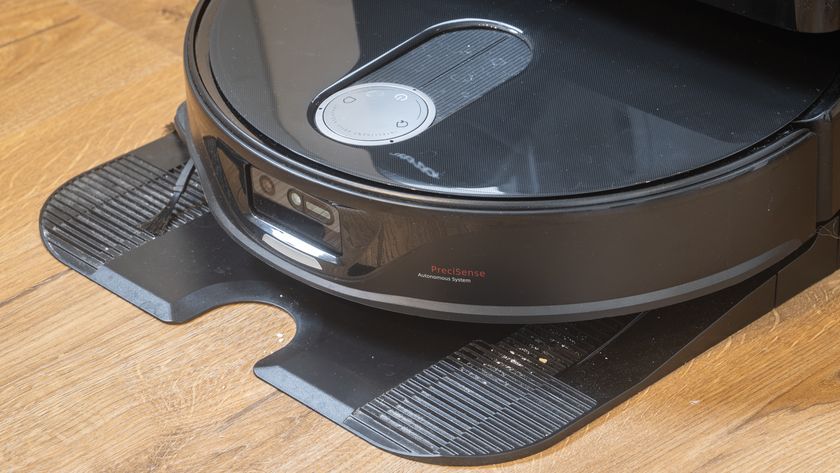11 ways to create a successful Linux distro
How to create a distribution that stands out from the crowd
Similarly, Ubuntu's brown can look warm and human or dull and 1970s depending on your background. So, when it comes to your own distro, please give some thought to the look and feel – don't just expect people to customise the design to suit their tastes, because if your initial design looks bad then people will just give up.
There are two options for you here: create your own theme for your desktop, or go for the defaults. It's easy to create a theme, and you can borrow the pieces from other places if Gimp isn't your forte. But there's a lot of value in going for the default look and theme for your desktop, because so many distros insist on branding things with their logo. So rather than having a K button for KDE you get a gecko, or you get an Ubuntu logo rather than the Gnome foot in the menu bar.
6. Aim for ease of use
This one is becoming a bit tired these days – Mandriva was the first distro to really make it work, but now multiple distros compete for the title of being most easy to use. And the downsides don't end there: being easy to use invariably means having to create your own graphical tools for basic system admin, and you should expect lots of flak from some of the more aggressive community members for "dumbing down" Linux.
Still, if you succeed in making Linux easy to use, then you're targeting the most important market: people who are Windows/Mac users and want to jump ship to Linux.
The alternative is to play the Slackware card, which means creating absolutely no ease-of-use tools and letting users get on with it. That might sound bad on paper, but lots of more advanced users really dislike the way that some distros overwrite their customised settings by trying to be "easy", which means that something like Slackware has a lot of appeal.
7. Focus on a language or country
Get daily insight, inspiration and deals in your inbox
Sign up for breaking news, reviews, opinion, top tech deals, and more.
This is the easiest option, both for creating a distro and for attracting an instant user base. The downside, rather predictably, is that it rather requires you to come from/live in a country with weak free software support, but you'd be surprised at just how successful you can be if you try.
Remember, if your language is in the minority in your country (think Scottish Gaelic in Scotland), you may be able to scrounge up some government funding for helping promote its survival and propagation.
8. Solve a problem
This option sounds easy, but it really isn't: find a problem that lots of people have with their computer or with Linux, then solve it.
It sounds easy because everyone has problems with their computer, but it's not easy because the mass-market computing industry has been striving for improvement for the last 20 years now and those problems still exist despite the best efforts of the world's largest software companies.
The smart money is on tackling a small problem, or at least breaking a larger one up into small chunks, so that you can make progress easily.
9. Build a community
Some distros, most notably PCLinuxOS, owe a large amount of their popularity to their friendly and open community, and it's not hard to replicate their success.
The key to getting a large community is to help users help themselves and each other as early as possible. That is, if the only people who can answer questions about your distro are experts, then only a few people will be able to help build the community.
But if your distro is designed in such a way that even people with only a few days of learning can already start answering forum questions, then you'll find people join in much faster and the whole community springs up at lightning speeds.
10. Target some hardware
This is a tempting but tricky option: tempting because if you can get a good Linux port on to a specific device then you'll find it easy to gain users and may even gain support or funding from the manufacturer; tricky because you need to do an awful lot of the legwork yourself – if the term "cross-compiling" means nothing to you, then this is definitely something to leave alone.
11. And finally: copy, copy, copy!
The whole point of free software is that we're sharing ideas, sharing code and sharing innovations among ourselves to benefit all computer users. So go and try some of the top distributions. Try PCLinuxOS. Try Linux Mint. Try Sabayon.
Write down a list of three things from each one that you like, then steal them for your own distro. Not-Invented-Here syndrome doesn't exist on Linux, so use that to your advantage and copy stuff!
-------------------------------------------------------------------------------------------------------
First published in Linux Format, Issue 113
Now read The 14 best Linux distros
Sign up for the free weekly TechRadar newsletter
Get tech news delivered straight to your inbox. Register for the free TechRadar newsletter and stay on top of the week's biggest stories and product releases. Sign up at http://www.techradar.com/register











